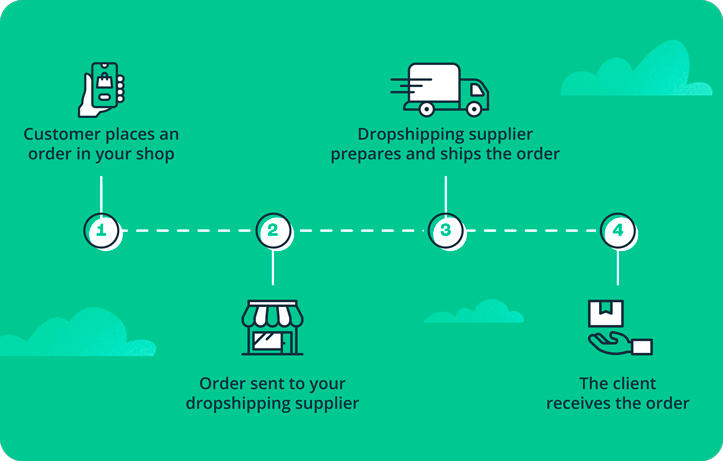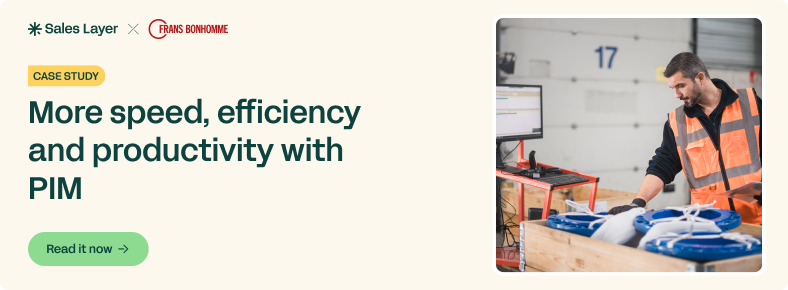
What is dropshipping?
Dropshipping is a way to manage shipments for online shops in which a company does not have its own stock but instead channels its stock through an external provider which may be a manufacturer or wholesaler.
This means that when a customer buys a product on an online shop, the business buys it from a third party and the third party sends it to the customer.
As you can imagine, this model is used in multi-brand retail business models, whether they are specialized in a specific product niche or in many product categories, making it difficult to store their own inventory. It is estimated that around 30% of online stores use dropshipping as a way to manage their shipments.
How can you break into dropshipping? By coming to an agreement with a provider that offers all the products and brands that you want to sell in your online shop, or by a specialized dropshipping platform.
Modalyst, SaleHoo, and even AliExpress are well-known examples of dropshipping providers, although perhaps the most famous is Oberlo, developed by Shopify. If you have an online shop in this platform, it is very easy to integrate Oberlo with your catalog and place orders for stock automatically.

An example of the dropshipping model
- The customer buys a Moleskine notebook through your online store.
- You get confirmation of the customer’s purchase and payment.
- You order the notebook from your supplier, who receives the shipping data and charges you for the cost of the notebook.
- Your provider prepares the notebook’s shipping and sends it to the customer, listing your shop as the sender.
- You share the tracking information with your customer.
Benefits of dropshipping for brands and retail
It couldn’t get any easier
The dropshipping model is direct, simple, and easy to put into place. You don’t need advanced business knowledge to get this model off the ground, nor do you need to worry about internal strategies as almost the entire inventory process is outsourced.
Scalable
You can start with a small product catalog and keep growing to endless limits. Some suppliers give discounts for orders in large quantities and if you increase your volume of orders, the way you work will not change nor will you have higher costs.
Inexpensive
As you leave all the management to third parties, you don’t have to invest in management systems or in buying or renting a warehouse, or in staff, or in paying for your own stock up front.
Flexible
Almost any type of product can be found through a supplier and dropshipping can be used. In addition, you don’t need physical space and you can set up and manage your business from just a single computer from anywhere in the world.
Drawbacks
Low profits
The ease and convenience of the dropshipping system comes at a cost: the profit margins are quite low.
Normally more inexpensive wholesale prices are not applied because you’re making per-unit orders and not buying things in large quantities. This is especially true for products under high demand and competitive products, as you’ll have to offer competitive prices and the cost it takes for you to buy the product from the supplier will always be greater than your cut.
Continuing with the example from before:
- The customer buys a Moleskine notebook that costs $21.
- Ordering the notebook from your provider costs you $18.
- This leaves you with a final profit of $3 on that purchase.
Lack of control
Choosing the right providers is quite important in dropshipping. If they don’t behave the way they should, you’ll be the one suffering as your customers will blame you for delays and mistakes in the shipments.
As you are trusting a third party, you leave the most delicate part of ecommerce in their hands: ensuring that the right products get to the right place in good condition and within the foreseen delivery timeline.

Inventory complexity
If you have more products and brands, you may need to turn to more than one provider. In addition, you can sometimes find price differences that will make it more profitable for you to turn to different providers for different products.
This makes things more complex to manage, as you’ll have to follow up on different fronts. It may also affect your image if the performance and speed of the providers is not so effective, and it makes it more difficult to apply automatic order and confirmation systems.
Stock shortages
If you manage your own inventory, your online shop will always be up to date with the exact number of items in stock for each product. When you depend on providers, you may come up against problems with stock at any given time – and this will affect the speed of shipments.
Fearing stock excess? Tips to to get rid of it
Shipping mistakes
When online shops have their inventory under control, they can ensure that the client will always receive the right product. This is easy and automatic with a PIM solution (Product Information Management) that keeps all the catalog data up to date in real time for all the channels from the online store to marketplaces like Amazon.
Thus, your customers will always be satisfied with the correct product information and orders instead of the surprises that can come about with dropshipping.
How much will dropshipping cost your shop?
No matter how inexpensive it may seem, the dropshipping method involves several costs:
- The products: as we have seen, you pay the cost of each product directly to the provider.
- The shipments: although the provider sends the product to the customer, you pay for the shipping.
- The maintenance: both of your online store and your marketing to reach your clients.
According to a study by Fit Small Business, retailers who use dropshipping have a profit margin of 20% and a sales conversion of 2%. This formula will help you to calculate the approximate profits:
(Traffic x .02) x (Average Order Price x .20) = Profit
When is it best to use dropshipping for an online shop?
Considering how it really works, this model is not for everyone.
It may be quite convenient and useful in some cases for retailers who use it as a secondary form of income or business:
- New businesses: If you want to check how a product niche does, it may be more scalable to start with a dropshipping model before you buy your own inventory.
- Physical shops: Even if they have their own inventory, they can turn to dropshipping for secondary products from their catalog that typically don’t offer great profits. For example, aromatic candles in a stationery shop.
- Influencers and personalities: Merchandising is easier to undertake and manage through third parties than with your own warehouse – especially if the volume of sales is low.
- Delicate products to store: sStoring these types of products implies high costs because of the space they take up or the extra insurance they need. That’s why a store with its own inventory could use dropshipping for large items, heavy items, fragile items, things that have a high value, and/or things that need special storage conditions (like refrigeration).
Is an online shop or a marketplace more profitable? Find it out!
Alternatives to dropshipping in ecommerce
If you aren’t sure about the dropshipping model, of course it is not the only way to manage inventory and shipments in ecommerce. Here are the most common options:
Your own inventory
This means that you have your own warehouses or rented warehouses to store and manage your own stock. It implies higher expenses in terms of space, staff, and automated systems to manage inventory and orders; however, it is the most common model for brands and retailers who seek control and profits.
Rebranded generic products
With this system, you buy products from a manufacturer to sell under your own brand. Therefore, you don’t have to use dropshipping and instead you can store the products yourself.
Marketplaces
Amazon offers its own dropshipping service if you don’t want to manage stock and shipments. There are also alternatives on that marketplace and others like eBay to sell your product inventory with you in charge of the whole process, or to send your products to their warehouses so that you don’t have to handle packaging and shipping.
Do you want Amazon to do the work? Here’s how their Logistics program works
Wrapping up
Using dropshipping in ecommerce can be a good way to start to test the waters for a specific business. Nevertheless, if you are seeking control and a better profit margin, or if you are already an established business with a large catalog, it could be a problematic model that is less profitable.
Turn to dropshipping if you want to take your first steps as a retailer or complement your ecommerce strategy with a secondary product line that is less important for you.
To keep an online shop running smoothly and provide a satisfactory experience to your customers, remember that a PIM solution allows you to have your stock and product data up to date on all your channels. Try it for free here with Sales Layer and discover why it really is profitable to trust others for some things and automate processes.












